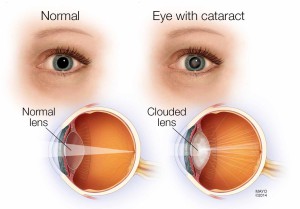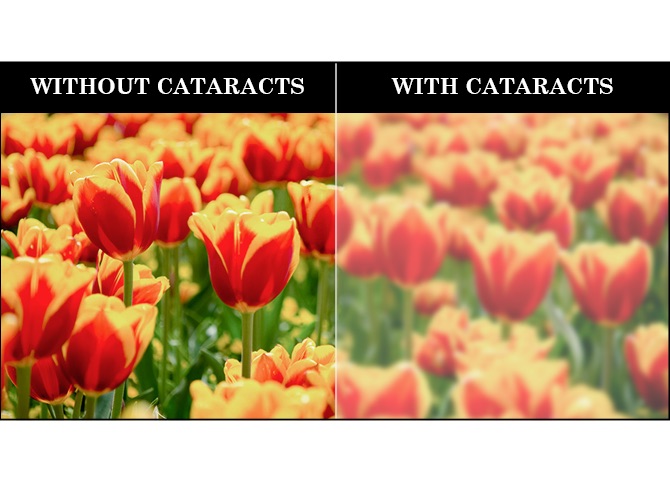June is Cataract Awareness Month and we’re here to help you learn more about this common eye issue.

Do you know what a cataract is?
Your eyes are very similar to a camera. Like in a camera, there is a lens in your eye that focuses light on your retina, much like a camera lens focuses light on film. From the retina, images are collected and transmitted to the brain. When the lens get cloudy, it is called a cataract; the images will appear blurry or distorted, as if you’re looking through a window that is covered with ice.

What are signs that you may have a Cataract?
- Foggy or blurred vision
- Colors appear dull
- Problems with glare from indoor lighting or the sun
- Frequent changes in your eyeglass prescription
- Your night vision has decreased or you see halos around headlights on cars
Here’s an example of how you may see with and without a Cataract:

How are Cataracts treated?
Medically, there is no way to slow the progression of cataracts. Thankfully, surgical treatments have significantly improved in the past 50 years and is the best way to treat cataracts.
What happens when you have a Cataract removed?
A small incision (less than 3mm) is made in the eye. A small instrument is placed in the eye through the incision and breaks up the cataract using ultrasound technology while also removing the fragments. Once the cloudy lens is removed, a replacement lens (Intra-ocular Lens, or IOL) is inserted into the eye and set into permanent position. This process only takes about 15 minutes.
Cataract Facts:
If you’d like to test you knowledge of cataracts, click here to take the Cataract Quiz!



